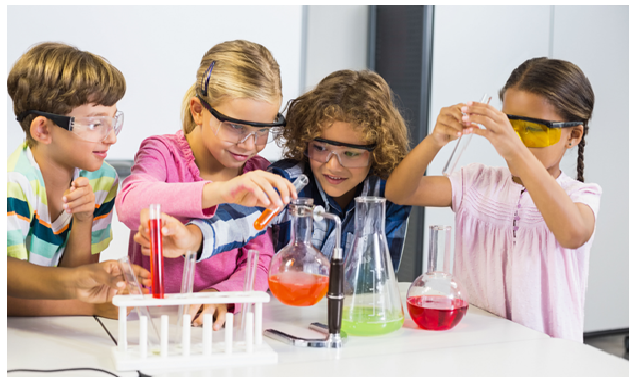Science plays a crucial role in life. It’s the founding basis of understanding many things of life and especially comes in handy to develop a scientific temper. However, while it is easy to learn science at the matured stage, the very basis of its understanding starts in the tender age, in the inquisitive minds of kids.
Therefore, it is essential to make way for the learning of science amongst kids. This might seem easy but it isn’t. Children are prone to accidents and are restless by nature. So, teaching them science is a hazard as we are dealing with safety issues.
For this, we need to understand the nature of safety procedures in science labs. So, here are some insights on how to make science labs safe for kids.
- Wearing Proper Clothes
Image : akronchildrens.org
Just like any other place, the laboratory too, demands certain protocols and it’s important we strictly abide by them. This is even more important for children as their body is more sensitive. Their T-Shirts designed should be Lab themed.
Labs contain various kinds of chemicals, kits, and elements. So, it’s important to wear proper clothes to prevent any kind of damage to spillage, explosions, and other such happenings.
Children are advised to wear long sleeved clothes, fully covered pants, lab coats, gloves, eye protection goggles, even masks under certain circumstances. Keeping them covered is the first rule of lab safety.
- Properly label things
Next in the priority list, is to be well organized and efficient, and take care of labeling and marking things. This is a basic protocol in all labs.
Laboratories contain various media, chemicals, bacterial samples and other harmful things.
So, it is important to label each and everything often demarcate or restrict toxic substances to a particular section.
Hence, media bottles, equipment, glassware, chemicals all should be labeled and put to their respective places. Another thing to keep in mind is to make sure that all things used in the laboratory are properly stored as instructed by the manufacturers.
- Knowing the correct usage of things
While children might not be aware of the correct procedure of things or the exact ways of doing things, it is essential that an adult guides them. It’s easy and fun to conduct experiments and verify what you have learned. But there’s much more to this than just fun.
Children have to be made aware that science equipment can’t be taken lightly. You just can’t keep things like you do in your room or a normal household.
All things have a specific condition to survive. Science objects can’t be kept in a normal area in any kind of container or packaging you might find. For this, you need to use specific containers – science bottles, jars, flasks, test tubes and other such things which can withstand harmful substances.
- Proper Waste Disposal Mechanisms
As you can see, laboratories contain potentially harmful chemicals, media, bacterial agents and other such things. So, disposing them is not that easy.
It’s not like any other waste which you can pack and dump in the dump yard. This is potentially hazardous waste which needs to be disposed of in proper waste disposal containers like waste disposal cans, safety funnels, and cans, safety cabinets, secondary containers etc.
It’s important to use these designated waste disposal containers in the lab and make kids aware of this.
- Following the Procedure
Last but not the least, the importance of following the procedure. Children can be unruly at times and they might not abide by the rules. However, this is one region where they must be made to understand the importance of following a procedure.
Kids should be specifically instructed about the dos and don’ts in a laboratory and they need to strictly follow. This includes keeping a distance from harmful things and not to meddle with stuff without permission.
These are certain things one needs to keep in mind when there are kids in the laboratory.

